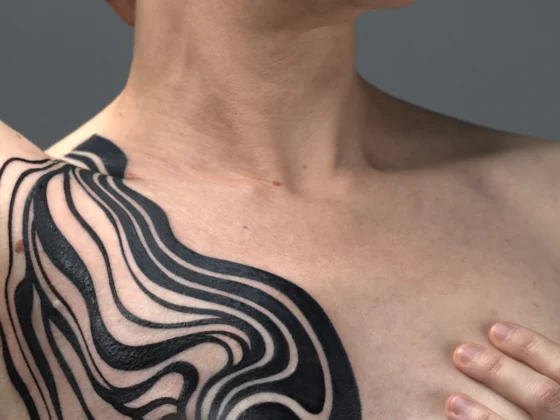Dan Wickman
November 27th, 2018
Laser Tattoo Removal. Read This Before Going Under the Laser!
The Who. What. Where and When!
No longer the symbol of outlaws, tattoos have become popular among men and women from all classes and backgrounds. Large and small cities boast tattoo parlors as hip neighborhood hangouts and art venues. While tattooing technology has advanced, ink is still ink, and tattoo artists can still make mistakes. By some estimates, 45 to 50 percent of Americans have at least one tattoo and approximately 25 percent of them considered tattoo removal. Why so many? There are a variety reasons, but the prevalent theme is change. The three most common factors for tattoo removal are:
1) Attitudes and lifestyles change, so the tattoo no longer represents what’s inside. This is most common with slogan tattoos, but can apply to almost any tattoo.
2) Often a decision to remove a tattoo is due to the person’s environment change. A new job, a new family or a new lifestyle can lead to tattoo regret. Sometimes a tattoo stands in a way of career advancement, in which case tattoo removal is the only option.
3) Just as everything else, art trends change. Evolution of tattooing techniques and achievable artistry has altered interests of tattoo enthusiasts.
But, regardless of the reason, this is where laser tattoo removal can help!

Laser tattoo removal procedure has been approved by FDA approximately twenty years ago. Due to the technological advancement and process refinement, the laser tattoo removal procedure has become even more save and effective. But, tattoo removal is still a relatively complicated process and various tattoo removal centers approach it differently. For example, The Finery Boston tattoo removal center breaks down the process into three components: the laser, the body and the tattoo.

The First part of the removal process is the laser. Ink is broken down into tiny particles by the laser beam focused on the tattoo in the subdermal layer. Microscopic particles are then easily removed by the body. The traditional laser is the Q-Switch ND YAG laser. It is seen as “older” technology, but it is still extremely effective on dark inks. The second and the latest technology is the Pico laser. It goes in and out of the skin at a significantly faster rate allowing easier removal of colors such as blue, green and purple. The Finery often uses the two types of lasers together for complete tattoo removal.

The second part of tattoo removal is the body. After the laser breaks down the ink, the body’s immune system disposes of the particles. The healthier the immune system the faster it will remove the ink remnants. Age, health, lifestyle and metabolism all impact the effectiveness of the laser tattoo removal.
https://www.youtube.com/watch?v=eLTfjqC5hY8
The third part of the process is the tattoo itself. FDA does not regulate tattoo ink, so the materials within the ink can vary greatly. Some ink types are relatively natural and, therefore, can be removed more quickly. But, it is not uncommon to find inks with synthetic components like plastics or metals. These can take longer to remove as it is harder to break them down into small particles.

There are other factors that impact the tattoo removal process, including scarring and the tattooing method. But, in vast majority of the cases laser tattoo removal is the right solution for removing a tattoo or clearing the canvas for the next work of art.
Editor's Picks
Florida Rapper Mourns the Slaying of 2 Friends and Then is…
With Friends Like This, Who Needs Enemies?
Six Good Reasons Not to Get Tattooed and One…
Are you looking to get tattooed? Should you think again?
Ariana Grande Offered $1.5 Million to Laser Off Her Botched Tattoo
Maybe Your Bad Tattoo is Also Worth $1 Million!?











